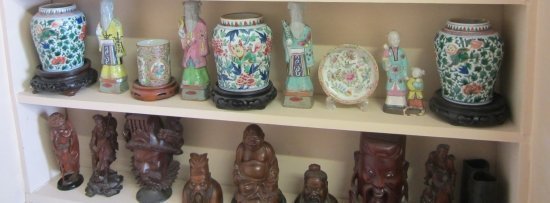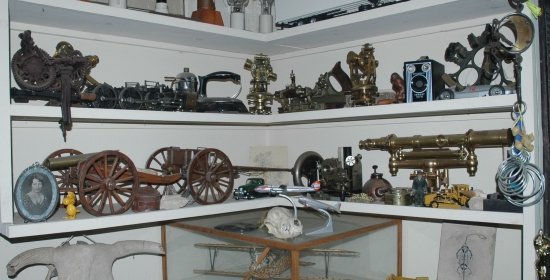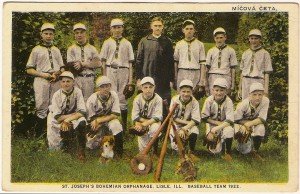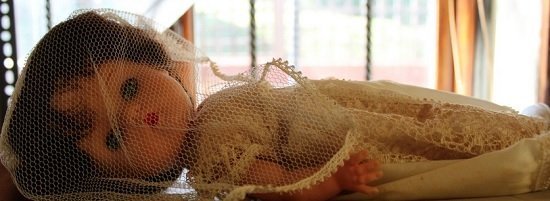If you followed in the footsteps of another appraiser and read the following descriptions: “pair of sitting spaniels;” “mocha with cable decoration;” or “flatback figurine,” how would you react.?
All are legitimate descriptions of items as the English would term them, as all were made in England. The names should be applicable in this country as well. The spaniels, in this country, are better known as “Staffordshire Dogs;” the cable decoration is referred to as “earthworm;” and the flatbacks are known here as “Staffordshire Cottage Figures.”
One will see the term “parcel-gilt” used to describe gilded wood, most often mahogany or walnut – a more conventional term would be simply “gilded furniture.” We learn from noted writers that over one half of the so-called “oak” furniture is not oak at all. A great deal of it is chestnut, elm, poplar, and even smooth birch with an oak grain stamped on it. Is it not best to use the proper names in describing woods?
We know the period of reviving old styles of furniture began in the mid-19th century, when cabinetmakers like Joseph Meeks, and later the Herter Brothers, began introducing designs as a revolt against the “Victorian” rounded and carved forms then prevalent.
In 1868, Charles Eastlake, in England, published “Hints on Household Tastes,” where he brought the incoming Gothic Revival forms into focus in simple household furniture.
In 1970, the Boston Museum of Fine Arts staged a showing of work by Henry Hobson Richardson and Frank Furness who worked with Gothic themes. Jonathan Fairbanks, the American Decorative Arts curator, suggested that the household furniture in this style be labeled as “Eastlake,” rather than “late Victorian,” and also to differentiate it from the more fancy Gothic forms used in the high style pieces.
This relegates the 1840-1870 period to be identified as Victorian and the 1870-1890 period as Eastlake, for identification purposes. Mission and other oak designs took over in the 1890s.
It is quite important for anyone in collecting to learn the furniture periods and designs. Furniture is the largest item in the home and all the other decorative arts were made to complement rather than clash with it. This makes the identification of silver, ceramics, glass and other items much easier.
In identifying wicker, it is only proper to indicate whether it is Bar Harbor or Cape Cod weave – big difference in values, here. The former is woven with wide spaces out of cane or rattan, whereas the latter is tightly woven, most likely made of spun paper on a wire.
If you are appraising, take note of proper “name-calling.” Otherwise, those who are in the know, will not know what you are talking about…








